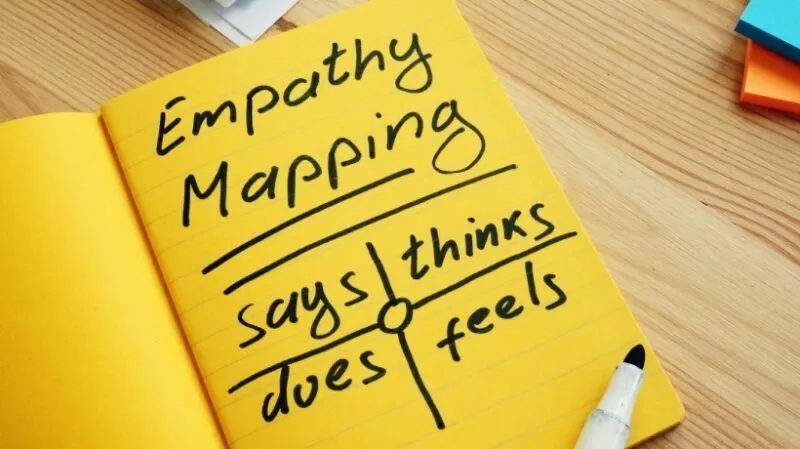Empathy Mapping: Enhancing Learning Experience Design
Empathy mapping is a powerful tool that has found its place in the world of learning experience design. Originally developed as a design thinking tool, it has proven to be an effective way to understand the needs, wants, and motivations of learners. In this article, we will explore the structure of empathy maps and the benefits they bring to the overall learning experience.
What is Empathy Mapping?
Empathy mapping is a visual representation of a learner’s thoughts, feelings, and behaviors. It is a tool that helps us understand the learner’s perspective and gain insights into their needs and preferences. This process involves putting ourselves in the learner’s shoes and looking at the learning experience from their point of view. By doing so, we can identify potential pain points and design solutions that cater to their specific needs.
The Structure of Empathy Maps
Empathy maps typically consist of four quadrants: Says, Thinks, Feels, and Does. The “Says” quadrant represents what the learner says out loud, while the “Thinks” quadrant captures their thoughts and concerns. The “Feels” quadrant delves into the learner’s emotions and the “Does” quadrant focuses on their actions and behaviors. These quadrants provide a holistic view of the learner and help us understand their needs and motivations.
Benefits of Empathy Mapping in Learning Experience Design
1. Understanding the Learner’s Perspective
Empathy mapping allows us to step into the learner’s shoes and see the learning experience from their point of view. By understanding their needs, wants, and motivations, we can design a learning experience that resonates with them. This leads to a more engaging and effective learning experience.
2. Identifying Pain Points
Empathy mapping helps us identify potential pain points that learners might encounter during the learning process. By understanding their thoughts, feelings, and actions, we can anticipate any challenges they may face and design solutions to overcome them. This not only improves the learning experience but also reduces frustration and increases motivation.
3. Personalization of Learning
Empathy mapping enables us to create a personalized learning experience for each learner. By understanding their individual needs and preferences, we can tailor the learning content and activities to meet their specific requirements. This leads to a more meaningful and relevant learning experience that resonates with the learner.
4. Designing Relevant and Engaging Learning Content
Empathy mapping helps us understand what motivates learners and what type of content they find engaging. By gaining insights into their thoughts and feelings, we can design learning content that is relevant and resonates with them. This leads to a more engaging and effective learning experience.
5. Improving Learner Retention
Empathy mapping can also help improve learner retention. By understanding the learner’s perspective, we can design a learning experience that is relevant, engaging, and meaningful. This leads to better retention of information and increased motivation to apply the knowledge in real-life situations.
Conclusion
Empathy mapping is a powerful tool that has found a home in learning experience design. By understanding the learner’s perspective, we can design a personalized and engaging learning experience that meets their specific needs and preferences. This leads to better learner engagement, retention, and overall satisfaction. So, if you want to create a successful learning experience, don’t forget to include empathy mapping in your design process.
This article was originally published on eLearning Industry, a leading online platform for eLearning professionals. It provides valuable insights, tips, and resources for anyone involved in the eLearning industry. With a community of over 630,000 members, eLearning Industry is a trusted source for all things eLearning.
In conclusion, empathy mapping is a valuable tool for learning experience design. By understanding the learner’s perspective, we can create a personalized and engaging learning experience that meets their needs and motivates them to learn. So, let’s embrace empathy mapping and design learning experiences that truly resonate with our learners.





